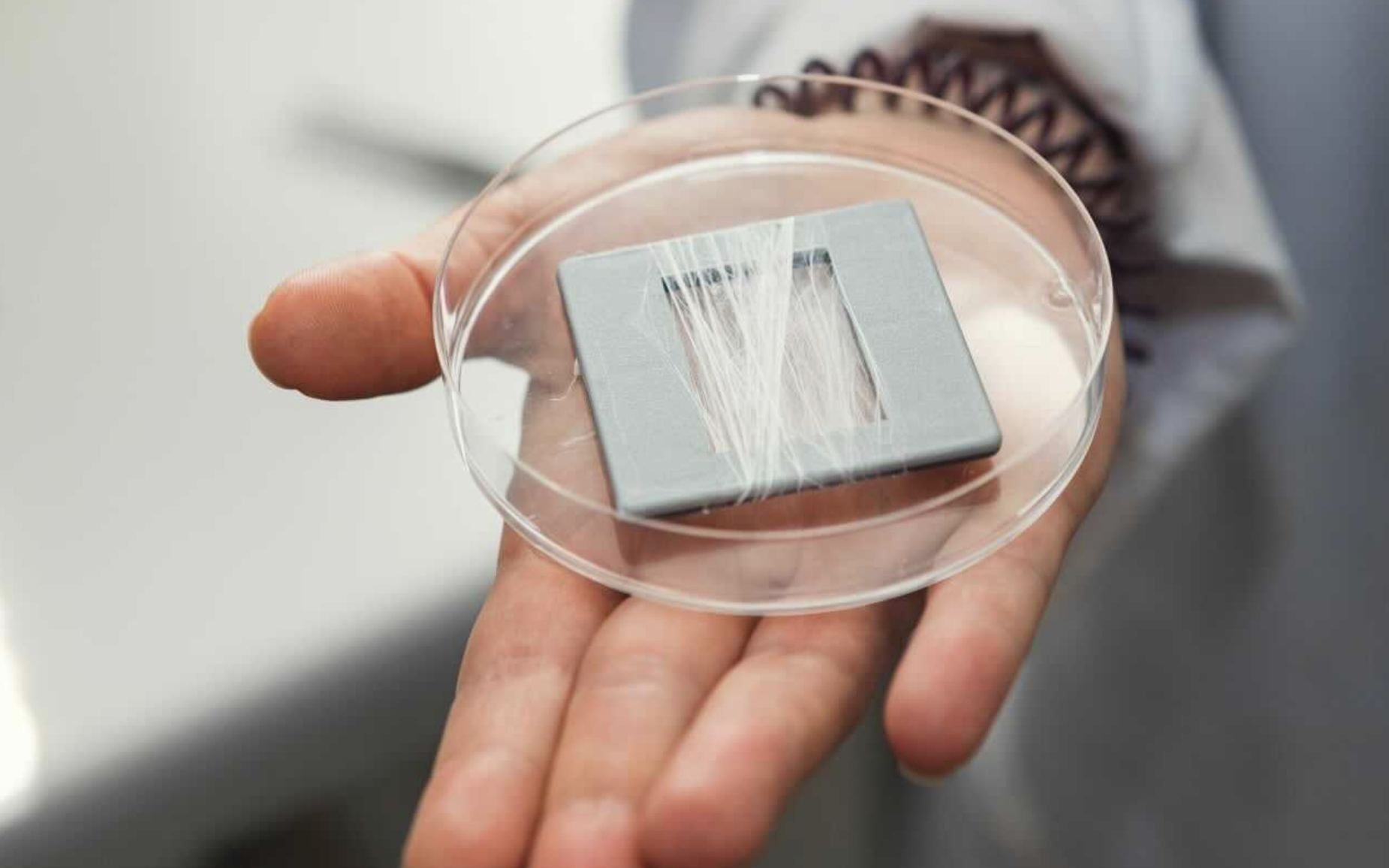Scientists from ITMO University’s Chemical and Biological Cluster have created a material based on natural web and nanoparticles that can be used in the production of threads for surgical sutures.
Such threads will surpass existing analogues in a number of characteristics and will be able to signal the presence of pathogenic microorganisms.
This was reported to RT in the press service of the university.
To develop a new material, the researchers used the web of tiger spiders.
They purified it from the waste products of insects, after which they placed it in a reaction apparatus (an autoclave for solvothermal synthesis).
There, carbon dots (a class of nanoparticles) were synthesized on the surface of the web fibers.
Gathered spider silk from tiger spiders is the future frame of a hybrid material developed by scientists
© Dmitry Grigoriev, ITMO.NEWS
As a result, scientists have obtained a hybrid material with unique optical properties that can be used to create threads for surgical sutures.
According to experts, threads based on such material will be more environmentally friendly, more functional and more elastic than those currently used in surgery.
Scientists note that the material will also contribute to the detection of pathogenic microorganisms that provoke various diseases.
“The main property of carbon dots is the ability to glow when energy (light) is absorbed.
Also, these nanoparticles can serve as a sensor for detecting pathogens, since upon interaction with them, the luminescence decreases and no optical response is observed.
Usually, when we shine a blue LED flashlight on our material, we see how it (the material) turns red.
But after interacting with pathogens, it stops glowing.
In the same way, doctors can check how wounds heal after surgery: if the material retains fluorescent abilities during the light test, everything is in order, if not, it is most likely that an inflammatory process is going on in the tissues, ”explained the author of the study, a student of the chemistry and biology cluster ITMO University
Elizabeth Maltseva.
Spider silk samples without nanodots (left) and with them (right).
When irradiated with blue light, a glow in the orange-red region of the spectrum is noticeable
© Dmitry Grigoriev, ITMO.NEWS
Researchers have already conducted experiments in the laboratory.
They inflicted three of the most common pathogens on the material - E. coli, staphylococcus aureus and Candida fungus.
After interacting with them, the new material ceased to glow in the blue spectrum.
Scientists plan to introduce their development into production.
In their opinion, surgical sutures made from the new material will help doctors quickly detect the appearance of pathogens at the wound site and stop the development of postoperative infection in time.

